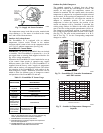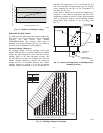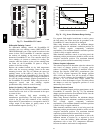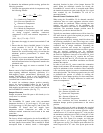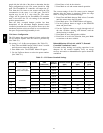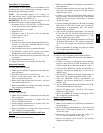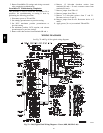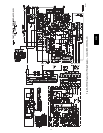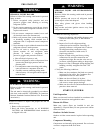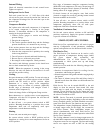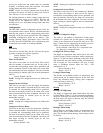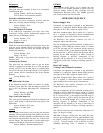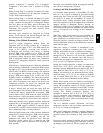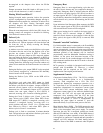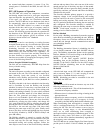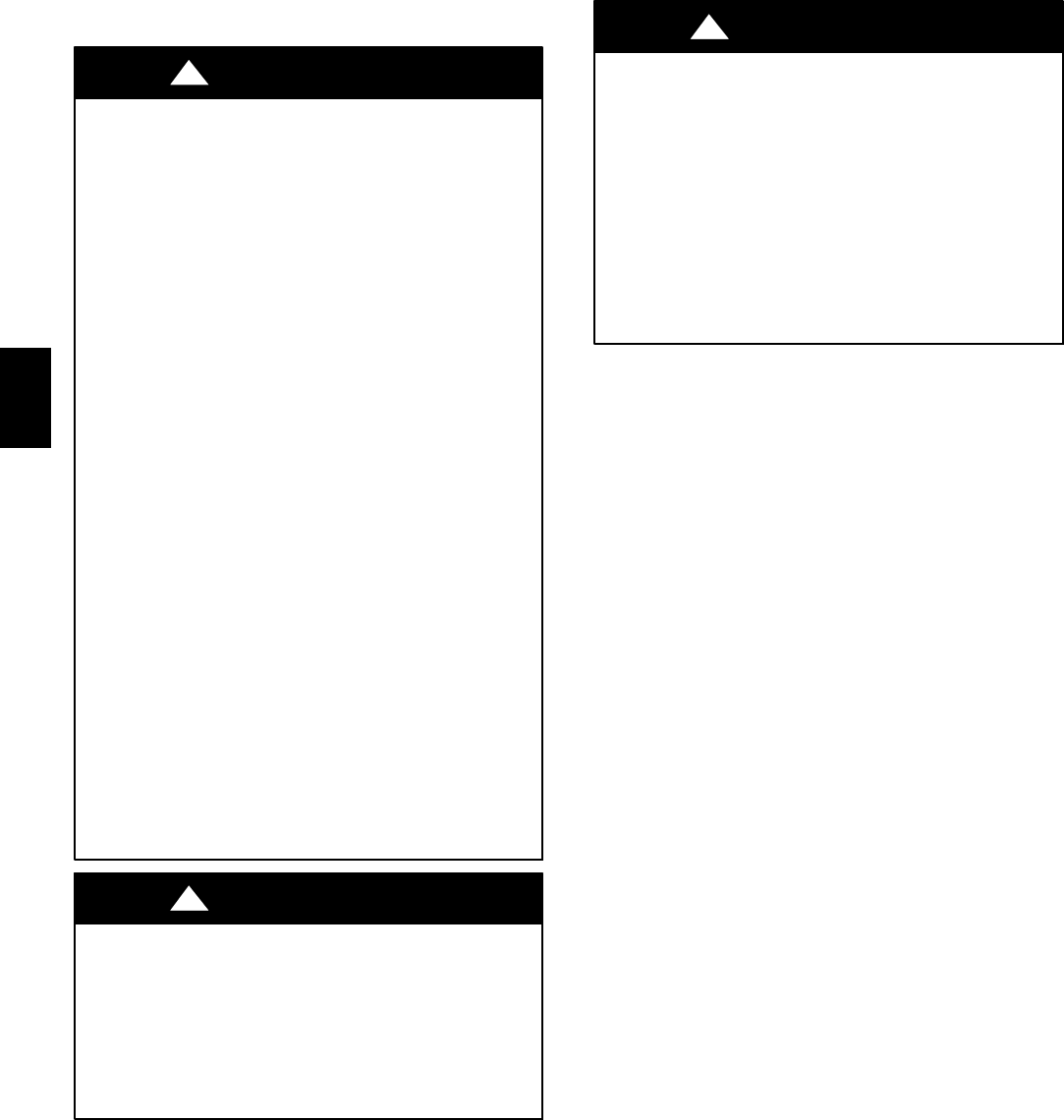
58
PRE--START--UP
PERSONAL INJURY HAZARD
Failure to follow this warning c ould result in personal
injury or death.
1. Follow recognized safety practices and wear
protec tive goggles when c hecking or servicing
refrigerant system.
2. Do not operate compressor or provide a ny electric
power to unit unle ss compressor terminal cover is
in place and secured.
3. Do not remove compressor termi nal cover until
all electrical sources are disconnected.
4. Relieve a ll pressure from system before touching
or disturbing anythi ng inside terminal box if
refrigerant leak is suspected around compressor
terminals.
5. Ne ver attempt to repair soldered connection while
refrigerant system is unde r pressure.
6. Do not use torch to remove any component.
System contains oil and refrigerant unde r
pressure. To remove a component, wear
protective goggles and proceed as follows:
a. Shut off electrical power to unit.
b. Recover refrigerant to relieve all pressure from
system us ing both high--pressure an d low
pressure ports.
c. Cut component connection tubing with tubing
cutter and rem ove component from uni t.
d. Carefully unsweat remaining tubing stubs
when necessary. Oil can ignite when exposed
to torch flame.
!
WARNING
ELECTRICAL OPERATION HAZARD
Failure to follow this warning c ould result in personal
injury or death.
The unit must be e lectrically grounded in accordance
with local codes and NEC ANSI/NFPA 70 (American
National Standards Institute/National Fire Protection
Association.)
!
WARNING
Proceed as follows to inspect and prepare the unit for
initial start-- up:
1. Remove all access panels.
2. Read and follow instructions on all WARNING,
CAUTION, and INFORMATION labels attached to,
or shipped with, unit.
PERSONAL INJU RY AND ENVIRONMENTAL
HAZARD
Failure to follow this warning c ould result in personal
injury or death.
Relieve pressure and recover all refrigerant before
system repair or final unit disposal.
Wear safety glasses and glove s when handling
refrigerants.
Keep torches and other ignition sources away from
refrigerants and oils.
!
WARNING
3. Ma ke the following inspections:
a. Inspect for shipping and handling damages such
as broken lines, loose parts, or disconnected
wires, etc.
b. Inspect for oil at all refrigerant tubing
connections and on unit base. Detecting oil
generally indicates a refrigerant leak. Leak -- test
all refrigerant tubing connections using
electronic leak detector, halide torch, or
liquid--soap solution.
c. Inspect all field--wiring and factory--wiring
connec tions. Be sure tha t connections are
completed a nd ti ght. Be sure that wires a r e not
in cont act with refri gerant tubing or sharp edges.
d. Inspect coil fins. If da maged during shipping and
handling, carefully straighten fins with a fi n
comb.
4. Verify the following conditions:
a. Make sure that condenser--fan blade are correctly
positioned in fan orifice. See Condenser--Fan
Adjustment section for more details.
b. Make sure that air filter(s) is in place.
c. Make sure that condensate drain trap is filled
with wate r to ensure proper drainage.
d. Ma ke sure that all tools and miscellaneous loose
parts have been removed.
START--UP, GENERAL
Unit Preparation
Make sure that unit has been installed in accordance with
installation instructions and applicable codes.
Return--Air Filters
Make sure correct filters are installed in unit (see
Appendix II -- Physical Data). Do not operate unit without
return--air filters.
Outdoor--Air Inlet Sc reens
Outdoor--air inlet screen must be in place before operating
unit.
Compressor Mounting
Compressors are internally spring mounted. Do not loosen
or remove compressor hold down bolts.
548J



